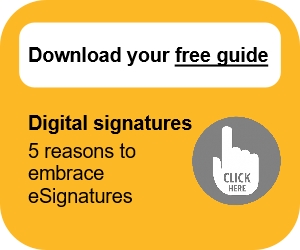E-sourcing
Contents |
[edit] Introduction
E-sourcing is also referred to as electronic sourcing or strategic sourcing and can encompass several aspects of the E-procurement process, including inviting suppliers to tender, managing the tender process, holding electronic auctions and so on.
It is a technology-based (either through software or Internet-based applications) component of E-procurement that gathers data about numerous potential providers to help the customer select a vendor. This can reduce both the cost and time associated with the procurement process while supporting interactions between customers and vendors.
[edit] Background
The traditional sourcing process used paper-based project management spreadsheets, checklists and RFx (RFQ, RFI, RFP) tools supplemented by phone calls, meetings and other information dissemination and distribution methods.
E-sourcing tools make use of technology to help update these aspects of the sourcing process and more. They are designed to enhance communication and relationships, while improving access to information. They can also facilitate the modernisation of organisations by supporting the adoption of a wider global supply management and supply chain strategy through the use of technology.
[edit] E-sourcing and procurement interactions
E-sourcing uses Internet and software applications and tools to facilitate online negotiations that encourage price reductions and competition. It is most frequently associated with online auctions (also referred to as E-auctions) in the form of reverse auctions, Dutch auctions, Japanese auctions and so on.
It can help create a procurement process that is well structured and transparent. Ideally, this reduces risk by providing terms that are clear to bidders. Ref E-sourcing in Procurement: Theory and Behavior in Reverse Auctions with Noncompetitive Contracts, Richard Engelbrecht-Wiggans and Elena Katok, 2006.
[edit] The strategy of E-sourcing
E-sourcing can be referred to as strategic sourcing as it can transform the procurement process through continuous improvement.
E-sourcing tools capture information that allows procurement professionals to save money and manage risk by identifying several key factors, including:
- What needs to be purchased.
- Who is the best source.
- When is the best time to make the purchase.
- What market factors need to be considered.
- Where is the supplier located.
- Who are the suppliers’ suppliers.
[edit] Possible issues with E-sourcing
There are some obstacles that may prevent or impede the adoption of E-sourcing. Many of these have to do with the organisation's willingness to accept change and embrace technology.
There are methods to anticipate these circumstances, including:
- Selecting the right E-sourcing tool. What is the purpose of the tool? Will it be used to run auctions or automate processes? Will the tool work with existing technology and will team members feel comfortable using it?
- Getting buy in from upper management. Will the executive team support the decision to move to E-sourcing? Do they understand the purpose of the initiative?
- Introducing E-sourcing properly. Is there a plan to put E-sourcing tools in place? Have champions been identified? Would they be able to encourage others who might otherwise resist anything new.
- Providing training. Are there super users amongst the champions who could need extra training to observe and enforce best practices?
- Offering positive reinforcement. Are there incentives or methods of recognition that could be used to encourage adoption and achievements amongst users? Would upper management support the introduction of bonuses for those who demonstrate outstanding usage of E-sourcing tools?
- Centralising data. Has a plan been put in place to create a standardised storage process? Will resources be consolidated?
- Have all aspects of the E-sourcing tools been investigated? Is it possible to encourage users to continue to find new ways to adopt unused resources?
Note: eSourcing NI is a procurement website for public sector and regulated contracting Authorities in Northern Ireland.
[edit] Related articles on Designing Buildings
Featured articles and news
Moisture, fire safety and emerging trends in living walls
How wet is your wall?
Current policy explained and newly published consultation by the UK and Welsh Governments.
British architecture 1919–39. Book review.
Conservation of listed prefabs in Moseley.
Energy industry calls for urgent reform.
Heritage staff wellbeing at work survey.
A five minute introduction.
50th Golden anniversary ECA Edmundson apprentice award
Showcasing the very best electrotechnical and engineering services for half a century.
Welsh government consults on HRBs and reg changes
Seeking feedback on a new regulatory regime and a broad range of issues.
CIOB Client Guide (2nd edition) March 2025
Free download covering statutory dutyholder roles under the Building Safety Act and much more.
AI and automation in 3D modelling and spatial design
Can almost half of design development tasks be automated?
Minister quizzed, as responsibility transfers to MHCLG and BSR publishes new building control guidance.
UK environmental regulations reform 2025
Amid wider new approaches to ensure regulators and regulation support growth.
The maintenance challenge of tenements.
BSRIA Statutory Compliance Inspection Checklist
BG80/2025 now significantly updated to include requirements related to important changes in legislation.
Shortlist for the 2025 Roofscape Design Awards
Talent and innovation showcase announcement from the trussed rafter industry.
OpenUSD possibilities: Look before you leap
Being ready for the OpenUSD solutions set to transform architecture and design.
Global Asbestos Awareness Week 2025
Highlighting the continuing threat to trades persons.
Retrofit of Buildings, a CIOB Technical Publication
Now available in Arabic and Chinese as well as English.


























